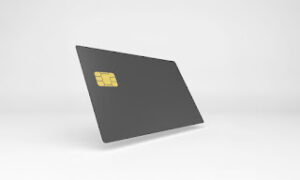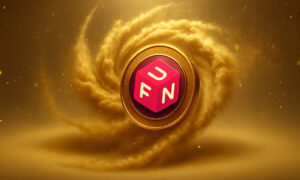If you want to sell your gold jewelry online, The Alloy Market provides a reliable and secure platform with the highest payouts, free estimates, and insured shipping. Buyers benefit from a variety of quality jewelry and a user-friendly interface that connects them with reputable sellers, ensuring peace of mind. Whether buying or selling, The Alloy Market makes the process smooth and trustworthy, turning your gold into cash with ease while ensuring security and satisfaction for all users.
Exploring the Alloy Market
The Alloy Market is a vital hub for both buyers and sellers of jewelry, with key players driving innovation and trends shaping global demand. Understanding pricing is essential for maximizing profit.
Key Market Players
Major players in the alloy market include Pandora, Tiffany & Co., and Swarovski. These brands set trends and standards in the industry. Their influence can be seen in design choices, marketing strategies, and even the materials used.
Smaller boutique brands also play a significant role. They often introduce unique, artisanal designs that cater to niche markets. These smaller players can sometimes disrupt the market with innovative techniques and fresh ideas.
Local craftspeople and independent jewelers further diversify the market. Their contributions add a personal touch and often focus on custom, one-of-a-kind pieces.
Global Market Trends
Global trends in the alloy market are heavily influenced by cultural and technological shifts. Sustainable practices are gaining traction, with more buyers seeking eco-friendly options. This trend pushes manufacturers to adopt greener methods and materials.
Online platforms have dramatically shifted how buyers and sellers interact. E-commerce has expanded market reach, making it easier for consumers to purchase global products. Social media influences purchasing habits as trends can spread rapidly.
Fashion trends also play a crucial role. Minimalist designs and bold statement pieces often alternate in popularity, influencing buying patterns. Keeping an eye on these trends helps businesses stay competitive.
Pricing Analysis
Pricing in the alloy market is influenced by several factors. Material costs are a primary driver, with precious metals like gold and platinum being more expensive. Supply chain efficiencies can also impact final prices.
Brand reputation greatly affects pricing. Renowned brands can command higher prices due to their established trust and quality. In contrast, new entrants might price more competitively to attract customers.
Market demand and seasonal trends also play a role. Prices might spike during peak gifting seasons or due to limited edition releases. Understanding these dynamics can help you better navigate the buying and selling process.
Alloy Selection and Quality
Choosing the right alloy and ensuring its quality are crucial when buying or selling jewelry. Understanding the composition, adherence to quality standards, and authenticity checks can help you make informed decisions.
Understanding Alloy Composition
Alloys are created by combining metals to enhance properties such as strength, durability, and appearance. Common jewelry alloys include:
- Gold Alloys: Mixed with metals like copper, silver, or palladium to alter color and hardness
- Silver Alloys: Sterling silver (92.5% silver), often combined with copper for added strength
- Platinum Alloys: Typically mixed with palladium, iridium, or rhodium for greater durability
Knowing the specific metals in an alloy helps you understand its value and suitability for different types of jewelry.
Quality Standards in Jewelry
Quality standards ensure that jewelry meets certain criteria for durability, appearance, and safety. Key standards to be aware of include:
- Karat Markings for Gold: Indicates the purity, with 24K being pure gold and lower karat numbers signifying more alloy content
- Sterling Silver Markings: Usually stamped with “925” to denote 5% silver content
- Platinum Markings: Often marked with “950” PT, indicating 95% platinum content
Jewelry should also comply with country-specific regulations and certifications, ensuring it has been tested and verified for quality.
Authenticity Verification
Verifying the authenticity of jewelry ensures you get what you pay for. Methods include:
- Hallmarks and Stamps: Official marks indicating the metal content and
- Third-Party Certifications: Independent assessments from organizations like the Gemological Institute of America (GIA) confirm the quality of gems and metals.
- Professional Appraisals: Qualified appraisers can provide detailed reports on the authenticity and value of jewelry pieces.
Always seek verification methods to ensure your jewelry is genuine and meets the promised standards.
Sustainable and Ethical Sourcing
Sustainable and ethical sourcing in the jewelry market ensures that the materials used are responsibly mined and traded. This encompasses tracking the environmental footprint and labor practices from the source to the final product.
Environmental Impact
The environmental impact of sourcing metals and gemstones is considerable, involving mining activities that can cause habitat destruction and pollution. Responsible sourcing prioritizes methods that minimize ecological damage.
For example, adopting recycled metals and lab-grown gemstones reduces the need for new mining.
Certain certifications, like the Responsible Jewelry Council (RJC), ensure that companies meet environmental standards.
Choosing these options decreases pollution and preserves ecosystems, allowing you to make environmentally conscious choices when buying or selling jewelry.
Ethical Supply Chains
Ethical supply chains focus on fair labor practices and human rights. This means that workers are paid fairly and operate in safe conditions without forced or child labor.
Certifications like Fairtrade Gold and the Kimberley Process play crucial roles. These certifications verify that materials are sourced under ethical conditions.
Supporting businesses with these certifications ensures the well-being of miners and contributes to more humane working environments. Your purchases can promote fair wages and safer working conditions for those in the industry.
Strategic Buying and Selling
For success in the alloy market, you need to find valuable investment opportunities, develop savvy marketplace strategies, and hone effective negotiation skills.
Investment Opportunities
Identifying promising alloys involves research and keeping track of market trends. Monitor metals like gold, silver, or platinum for their potential appreciation. Diversifying your investment portfolio with different types of alloys can mitigate risk. Examine historical price trends and consult expert analysis to forecast future market behaviors. Staying informed will help you make educated buying decisions and enhance profitability.
Marketplace Strategies
Navigating online marketplaces and physical storefronts requires an understanding of where to find the best deals. Compare prices across multiple platforms to ensure you’re getting the best value. Utilize customer reviews and ratings to determine the credibility of sellers. Building relationships with reputable vendors can result in better future deals. Additionally, consider timing your purchases during market lows to maximize your returns.
Negotiation Techniques
Successful negotiation hinges on preparation and communication. Begin by researching the current market value of the alloy you’re interested in. Confidence and clarity when discussing prices will help you secure the best deals. Don’t be afraid to walk away if the terms aren’t favorable; sometimes, the best negotiation tactic is knowing when to hold off. Practicing these techniques can significantly improve your buying or selling outcomes.
Conclusion
The Alloy Market offers a reliable and secure platform for buying and selling gold jewelry, providing the highest payouts, free estimates, and insured shipping for sellers, while buyers benefit from quality jewelry and a user-friendly interface connecting them with reputable sellers. This comprehensive marketplace simplifies transactions, making the process smooth and trustworthy for both professionals and newcomers, allowing users to focus on the beauty of jewelry without worrying about transaction complexities. Whether you’re navigating key market players, global trends, or sustainable practices, the Alloy Market ensures transparency, quality, and ethical sourcing, fostering a trusted community for all jewelry enthusiasts.





























